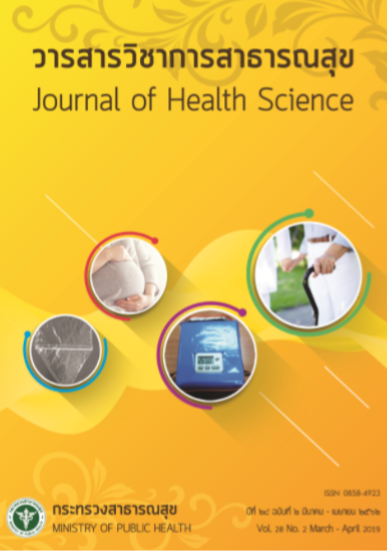Toxicity and Efficacy of Essential Oils against Red Flour Beetle, Tribolium castaneum (Herbst), a Vector of Human Pathogens
Keywords:
toxicity, efficacy, repellency, red flour beetle, essential oils, Thai herbs, environmental friendlyAbstract
Red flour beetle (Tribolium castaneum (Herbst)) is important stored products pests that contaminate and cause substantial loss of stored products. A variety of microorganisms was found from adults of red flour beetle which include the pathogenic bacteria, Staphylococcus aureus, Psudomonas aeruginosa, Bacillus cereus, Escherichia coli, Enterobacter spp., Aspergillus flavus, Aspergillus niger, Aspergillus fumigatus, Penicillium spp., Fusarium spp. and Rhizopus oryzae. Moreover, non-pathogenic bacteria were recovered including Bacillus subtilis. The use of fumigants is problematic because of their effects on the environment and insect resistance to chemicals, which has led to a search for alternative control measures. This study aimed to the contact toxicity and the repellency of Thirteen essential oils of Chinese cassia oil, Sweet basil oil, Tumeric oil, May Chang oil, Lemongrass oil, Guava leaf oil, Peppermint oil, Citronella grass oil, Pine oil, Orange oil, Tangerine oil, Kiffir lime oil and Lesser galangal oil against adult red flour beetle by using the contact toxicity (impregnated filter paper discs test) and the repellent assays (area preference method). Essential oils at different concentrations (1%, 3%, 5%, 7%, 9%, 11 and 13% (v/v) and 0.5%, 1%, 2%, 3% and 4% (v/v) were evaluated, respectively. The Calculation of LC50 by using Probit analysis. The LC50 values (at 48 hrs. after exposure) ranged from 3.80+0.10% to 11.00+0.06%. All essential oils had similar repellencies ranging from 61.50+0.25 to 92.00+1.15% (Class IV-V) at 4% concentration. At 2% concentration, Chinese cassia oil provided the highest repellency (79.00+2.08%, Class IV) followed by Citronella grass oil (56.50+0.25%, Class III) and May Chang oil (42.00+1.00%, Class III). This study revealed that Chinese cassia oil is the most effective among essential oils to control red flour beetle populations and should be further studied for field applications. The results obtained indicated the possibility of using the essential oils as protectants of sub-scale stored products in developing countries. Further research has to be carried out to identify the active components of these essential oils in the grain protection and their potential in storage environments.
Downloads
Downloads
Published
How to Cite
Issue
Section
License
Copyright (c) 2019 Journal of Health Science - วารสารวิชาการสาธารณสุข

This work is licensed under a Creative Commons Attribution-NonCommercial-NoDerivatives 4.0 International License.







